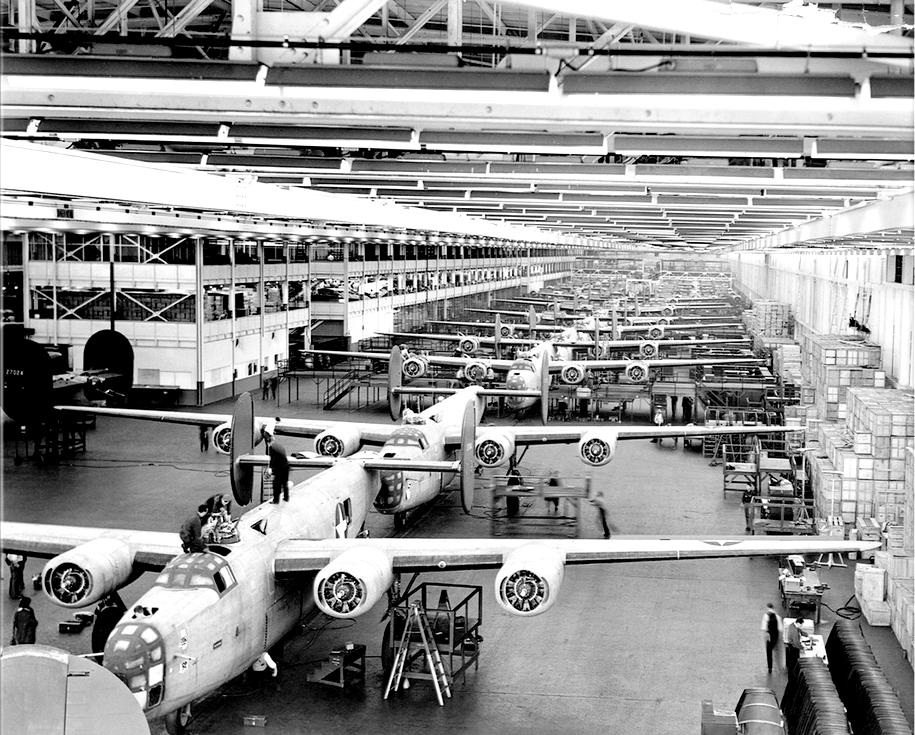World War II: Ford and Willow Run (United States)
Henry Ford was an admirer of Adolf Hitler who reciprocated Ford's admiration. Ford was also a determined pacifist which may seem a contraduiction, but we have the advantage of history from which to base our assessment. After Hiler asnd Stalin launched the War (1939), the Allies as in World War I turned to American, for food, raw materials and manufctured goods. And President Rooseveltv turned to GM Chairman Willian Knudsen, a fierce New Deal critic, to begin preparing American industry for war--the Arsenal of Democracy. It was not an easy task. American industry was emerging from the Depressio and reoporting real profits for the first time in years. Many did not want to prepare for war. And Ford was the greatest holdout. Hard pressed Britain was in desperate need for more of the phenomely imprtnt Merlin engines that powered the Spitfire and would power mny other asircraft. They offered Ford a contract. Edsel was interested, but his father turned the British down flat. America would build Merlins for Britain, but it would be Packard, not Ford. (The Ford subsidiary in Britain would be a major producer of Merlins.) The Japanese carrier attack on Pearl Harbor would change everything (1941). Ford was a pacifist, but he was also a patriot. When America went to war, so did Ford. In addition by this time, Ford was approching his 80s and Edsel was increasingly running the company. To design the plant, Ford turned to fanmed industruat archtect--Albert Kahn. The result was Willow Run (Air Force Plant 31),--the largest war factiory in the World, it originally was to span two Michigan counties. Ford insisited on an L-shape to keep it out of the Democratic county. It would also be designd of course by Albrt Kahn, although he died before the factiry was comopleted. Willow Run (Air Force Plant 31), produced Consolidated's B-24 Liberator bomber which along with the B-17 would turn the NAZI Reich into piles of smoldering rubble. We suspect that the Führer may have reassessed his judgement on Ford. America produced over 18,000 B-24s, half of which were built at Willow Run.
Source
Dominguez, Henry L. Edsel: The Story of Henry Ford's Forgotten Son (SAE), 425p.
CIH -- World War II
Navigate the Boys' Historical Clothing Web Site:
[Return to the Arsenal of Democracy]
[Return to the Main Henry Ford biography]
[Return to the Main biography D-F page]
[Return to the Main biography page]
[About Us]
[Biographies]
[Campaigns]
[Children]
[Countries]
[Deciding factors]
[Diplomacy]
[Geo-political crisis]
[Economics]
[Home front]
[Intelligence]
[Logistics]
[POWs]
[Resistance]
[Race]
[Refugees]
[Technology]
[Totalitarian powers]
[Bibliographies]
[Contributions]
[FAQs]
[Images]
[Links]
[Registration]
[Search]
[Tools]
[Return to Main World War II page]
[Return to Main war essay page]
[Return to CIH Home page]
Created: 3:01 PM 7/9/2023
Last updated: 3:01 PM 7/9/2023


